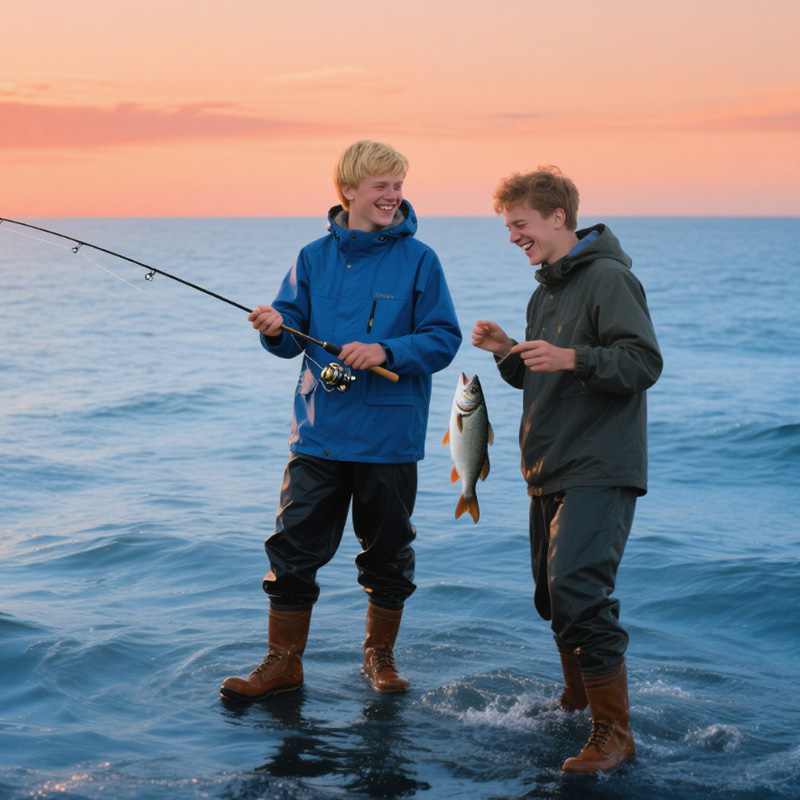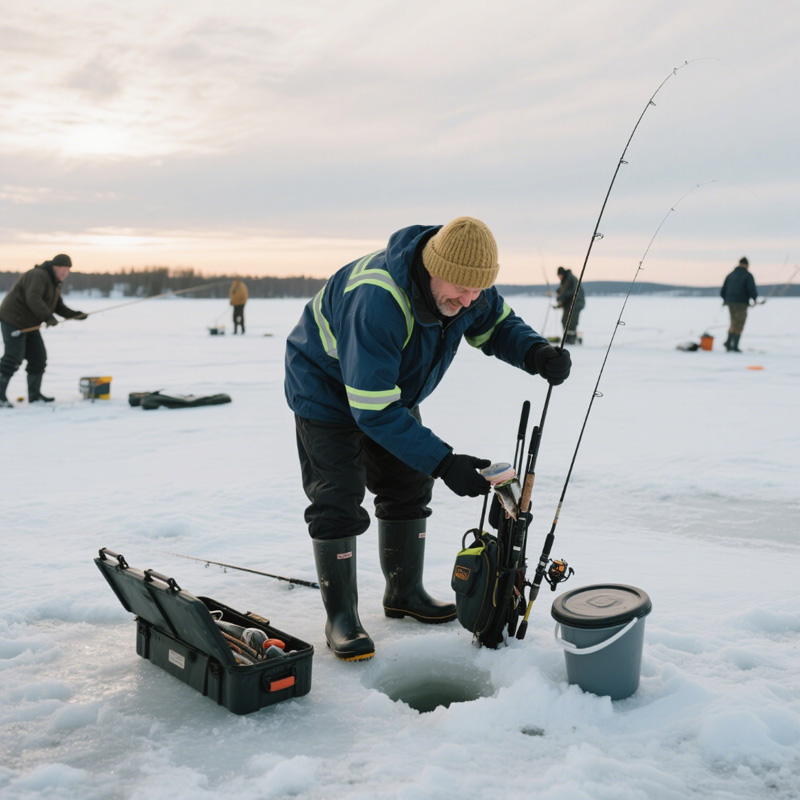Big game hunting refers to the pursuit and capture or killing of large wild animals, primarily for sport, sustenance, or trophy collection. It encompasses a range of species, from deer and bears in North America. Through to the “African Big Five”; lion, elephant, buffalo, leopard, and rhinoceros. Due to the challenges associated with big game hunting specialized skills and equipment are recommended. Along with an extensive knowledge of the target species’ behavior and habitat.
1. What Is Big Game Hunting?
Big game hunting is an ancient practice that has evolved over millennia, driven by a combination of necessity, culture, sport, and conservation. At its core, it is the pursuit, and often the capture or killing, of large wild animals. This endeavor has deep roots, with many civilizations having relied on big game for sustenance and ritualistic purposes. However, in modern times, the motivations, techniques, and implications have become more intricate.
Historically, hunting was a matter of survival. Before the rise of agriculture, our ancestors hunted large animals as a primary source of food, clothing, and tools. Over time, as societies progressed and evolved, the act of hunting took on more symbolic meanings. In many cultures, hunting rites became integral to coming-of-age ceremonies, symbolizing the transition from adolescence to adulthood. Success in the hunt was seen not only as a sign of physical prowess but also as a testament to a person’s patience, strategy, and connection to nature.
2. What Are Types Of Big Game Hunting?
Big game hunting encompasses a wide variety of species, providing hunters with diverse opportunities and experiences. In Africa, the “Big 5” are often the primary targets and include elephants, lions, leopards, rhinos, and Cape buffalos. These animals are deeply ingrained in African culture and are considered some of the most challenging and prestigious game species to pursue.
In North America, hunters seek out species such as deer (including mule deer and white-tailed deer), elk, moose, bighorn sheep, and mountain goats. These creatures inhabit rugged and expansive landscapes, requiring hunters to navigate challenging terrains and employ specialized tactics to successfully harvest them.
Additionally, other notable big game animals that hunters may pursue worldwide include black bears, caribou, wild boars, sambar deer, chamois, and Marco Polo sheep. Each species presents its own unique characteristics, habitat preferences, and hunting challenges, making each hunt a distinct adventure.
Big game hunting demands knowledge of the target species’ behavior, habitat, and migration patterns. Hunters must possess appropriate skills, such as tracking, stalking, and marksmanship, to effectively pursue these elusive animals. They also rely on specialized equipment, including high-powered rifles, bows, camouflage gear, and optics, to increase their chances of success.
Ethical hunting practices and conservation efforts are crucial aspects of big game hunting. Hunters must adhere to local hunting regulations, obtain necessary permits, and support sustainable wildlife management initiatives. Responsible hunters understand the importance of preserving natural habitats, conserving wildlife populations, and respecting the ecosystems they engage with.
Engaging in big game hunting offers not only thrilling adventures and personal challenges but also opportunities for cultural immersion, wildlife conservation, and the continuation of time-honored hunting traditions across the globe.
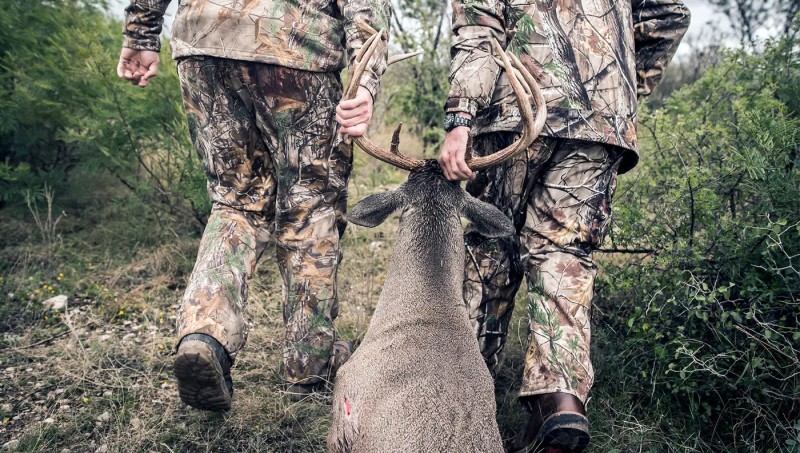
3. How to Prepare Big Game Hunting?
3.1 Hunt only one type of animal at first
Laser-like focus is the key to your early success as a hunter. If you’ve got several big game opportunities in your area, such as bear, mule deer and pigs, then pick one species to try first, and one species only. Novices will often make the mistake of picking a rifle and cartridge for, say mule deer, then packing other rifles or gear “in case” they see something else. While experienced hunters can often switch gears during a hunt by pursuing a species that serendipitously crosses their paths, new hunters need to focus on the species they are after. This means:
- Learning everything about the species they are seeking, including feeding habits, mating habits, the appearance of their scat, and what their natural environment is like.
- Learn where the species is most likely to be found.
- Learn what the natural predators of the species are.
Basically, if you have decided to go deer hunting, then go deer hunting rather than trying to bag a few ducks that you find along the way or follow that bear scat you found on the game trail.
3.2 Stick to a small area at first
Most novice hunters make the mistake of trying to cover too much ground in search of whatever they are hunting, and as such, they neglect the toll that all of this travel takes on their bodies. While it’s true that some species like bear are relatively few in number per square mile and require a hunter to cover a large area just to find one, the beginning hunter should hone his or her skills on game that is abundant and geographically constrained in space.
Hiking for miles while carrying a rifle and gear is hard work; work that most people aren’t used to, which leads to injuries, dehydration and disorientation. Consider stationary hunts for your first big game experiences; for example, consider setting up a tree stand over a game trail and waiting for deer to pass instead of actively stalking them. You’ll learn noise discipline, and also learn what sort of game passes over that trail so you can tailor your future hunts.
3.3 Consider trying a game reservation hunt as your first big game hunting experience
Game reservations and private hunting grounds have one key advantage to hunting in the wild; you are certain to find game. Taking the certainty of game out of the equation and using a guide, you can gain some valuable experience on engaging an animal target in a more or less controlled environment. Look for an outfit that has good guides, and above all, a sportsmanlike environment. It does you no good to shoot an animal in a pen, and you won’t learn a thing by doing it; having said that, if you can head out from base camp and go a mile, sighting your first animal within an hour of starting, you’re further ahead than spending all day outdoors and not seeing a thing.
3.4 Brush up on the basic principles of hunting
The basic principles of big game hunting relate to the behavior of the animal in its natural environment. This means that animals in general need water to drink, and thus they have watering holes they typically use. Because the watering holes are used by more than one species (potentially predators), the animals won’t usually eat or bed down by the watering holes. Instead, the animals will eat somewhere safe, and bed down somewhere away from too much activity.
Going from the watering hole to the food, and then to the bed down location, animals will create game trails – clearings in the bush that they follow, much like our freeways. Also keep in mind when animals are active; some animals are nocturnal, some operate during the day, and others are diurnal, which means they cover both day and night. As the name implies, hunting is the art of finding the animals, then engaging them. You can’t find them if you don’t know where to look!
Finally, brush up on your shooting positions, and teach yourself to shoot from positions other than standing, and while hidden behind cover. Practice stalking as silently as possible through brush, and also stay well aware of the direction of the wind in relation to where you are, realizing that most animals will smell you and flee well before you can see them. Keeping the basics of hunting in mind and honing these skills will make you a far more successful hunter.
4. What Kinds of Gear You Should Bring For Big Game Hunting
When preparing for big game hunting, it’s essential to have the right gear to ensure a successful and comfortable experience. Here are some key items you should consider bringing:
- Rifle and Ammunition: Choose a reliable and appropriate firearm for the specific big game species you’re hunting. Don’t forget to bring enough ammunition for your needs.
- Binoculars: High-quality binoculars are crucial for spotting game at a distance and assessing their size, gender, and behavior.
- Backpack and Pack Frame: A durable backpack with a pack frame allows you to carry your gear comfortably during long hikes or while tracking game.
- Emergency Equipment: Include essential emergency items like a first aid kit, fire starter, headlamp, whistle, compass, and a signal mirror.
- Knife: A sharp, sturdy knife is indispensable for field dressing, skinning, and processing game.
- Boots: Invest in comfortable, waterproof hunting boots with good ankle support to navigate diverse terrains and provide all-day comfort.
- Clothing: Dress in layers to adapt to changing weather conditions. Opt for moisture-wicking base layers, insulating mid-layers, and a waterproof outer layer. Don’t forget gloves, a hat, and face paint for camouflage.
- GPS: A GPS device or smartphone with GPS capabilities can help you navigate unfamiliar terrain and mark important locations.
- Sidearm: If permitted and appropriate, a sidearm can provide an extra level of safety in case of close encounters with dangerous game.
- Two-Way Radio: A two-way radio enables communication with hunting partners or a base camp in areas with limited cell phone reception.
- Rope: Bring a sturdy rope for various purposes, such as hanging game for field dressing or securing equipment.
- Food & Water: Pack lightweight, high-energy snacks and plenty of water to stay hydrated during the hunt.
- Cot and Sleeping Bag: For overnight trips, a comfortable cot and a warm sleeping bag will ensure a good night’s rest.
- Spotting Scope: A spotting scope allows for detailed observation of distant game and can aid in making accurate judgments before taking a shot.
- Bungee Cord: Bungee cords are handy for securing gear to your backpack or for various field purposes.
- Tarp: A lightweight tarp can provide shelter, protect gear from the elements, or serve as a ground cover during field dressing.
Remember to check local regulations and recommendations specific to your hunting area and target species. Having the right gear not only enhances your comfort and safety but also increases your chances of a successful hunting experience.
5. How To Choose Big Game Hunting Clothing
When choosing clothing for big game hunting, it’s important to consider several factors such as weather conditions, terrain, camouflage, and personal comfort. Here are some tips to help you select appropriate clothing for your big game hunting adventures:
5.1 Research the Weather
Understand the climate and weather conditions of the hunting area during your planned hunting season. This will help you determine the appropriate clothing layers to wear. Consider factors like temperature, precipitation, wind speed, and humidity.
5.2. Layering System
Dressing in layers is crucial for hunting in varying weather conditions. A layering system allows you to add or remove clothing as needed to regulate your body temperature. Typically, a layering system consists of three main layers:
– Base Layer: Choose a moisture-wicking fabric to keep your skin dry and comfortable. Avoid cotton, as it retains moisture and can make you feel cold.
– Insulating Layer: This layer provides warmth. Opt for materials like fleece, wool, or synthetic insulation, depending on the temperature.
– Outer Layer/Shell: The outer layer should protect you from wind, rain, and snow. Look for waterproof, breathable fabrics. Camouflage patterns are also important for blending into the environment.
5.3 Camouflage
Select clothing that matches the hunting environment you’ll be in. Camouflage patterns help to break up your outline and make you less visible to game animals. Consider the dominant colors and patterns in the area, such as woodland, desert, or snow camouflage.
5.4 Comfort and Mobility
Ensure your clothing allows for comfortable movement. Look for designs that provide ample freedom of movement, with articulated joints and adjustable features like cuffs and waistbands. Avoid clothing that restricts your mobility, as you might need to navigate rugged terrain or make quick shots.
5.5 Noise Reduction
Big game animals have acute hearing, so choose clothing that minimizes noise. Fabrics like fleece or soft-shell materials are quieter than stiff or shiny materials that can rustle or reflect light.
5.6 Footwear
Invest in quality hunting boots designed for the terrain you’ll encounter. Look for waterproof and insulated options if necessary. Choose boots with good ankle support, traction, and comfort to keep your feet protected during long hikes.
5.7 Accessories
Don’t forget to consider accessories like hats, gloves, face masks, and socks. Opt for items that provide insulation, concealment, and protection from the elements. Merino wool socks are particularly useful for moisture-wicking and odor control.
5.8 Safety
Check if any hunting regulations or laws require you to wear specific colored clothing, such as blaze orange, for safety reasons. It’s essential to prioritize safety while enjoying your hunting experience.
Remember, it’s always a good idea to consult experienced hunters or local experts who have knowledge of the specific hunting area for additional advice on clothing selection.
6. Tree Styles Big Game Hunting ClothingMade By BOWINS
6.1 Factory Direct Big Game Hunting Jacket
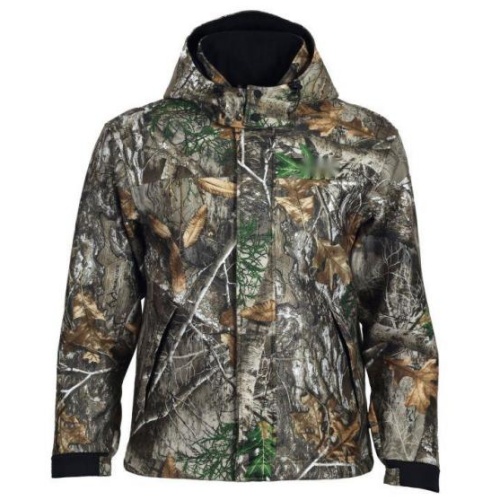
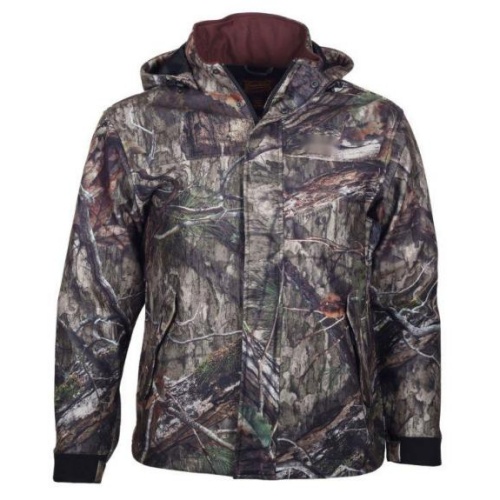
Features:
- Fabric is made from high-performance, two-layer bonded fleece
- Fleece lined handwarmer pockets zip closed
- Adjustable Lycra cuffs seal out the wet and cold
- Three-piece removable hood
- Stand-up collar seals out cold, wet winds
- Arm pit zips for ventilation
6.2 OEM or ODM Big Game Hunting Pants
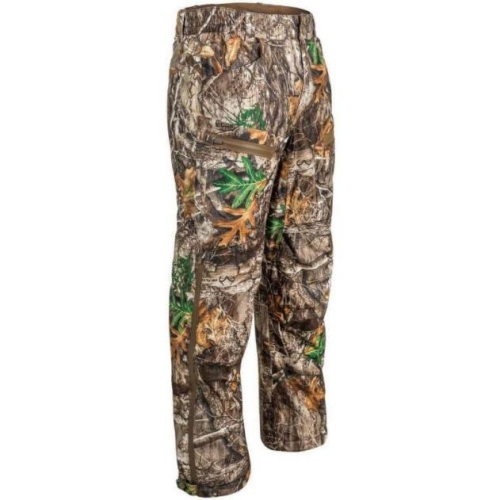
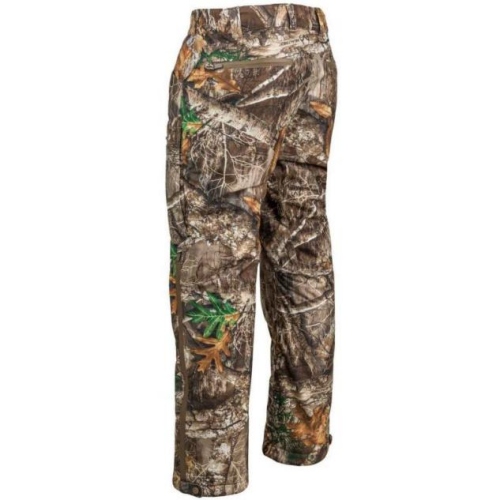
Features:
- Designed for all-season use,suitable for various outdoor
- Insulated for chilly weather.
- Functional pocket with 2 zippered back pockets& front pockets.
- Come with an adjustable waistbandallowing to customize the fit.
- Blend seamlessly with surroundingsby camo pattern.
- Enhanced durability and functionality
6.3 Manufacturer’s Big Game Hunting Vest
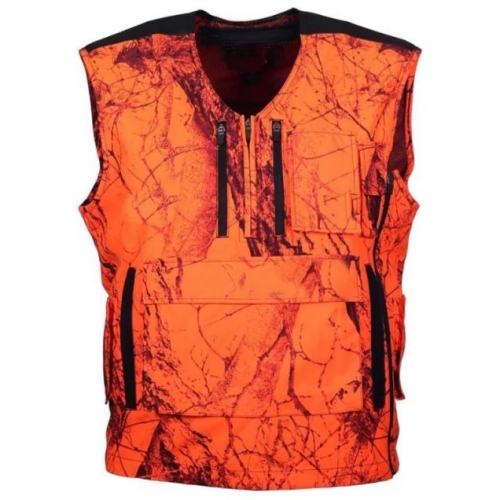
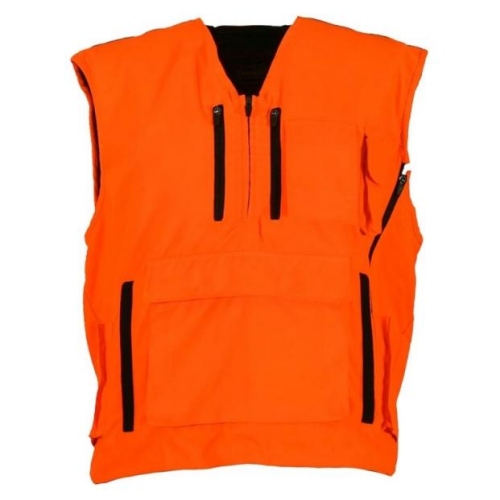
Features:
- Front side zipper for easy on/off
- Lined kangaroo pocket with large external pouch
- Two vertical chest pockets and rifle shell holders with flap
- Rear has large cargo pouch with backpack like staps
- Slot for safety strap – Fabric license holder tab and shoulder grips for sling
We take great pride in our proficiency in creating and developing top-notch big game hunting clothing at BOWINS Garment. Our extensive expertise is dedicated to crafting premium clothing that cater specifically to big game hunting, ensuring optimal protection, safety, and comfort throughout your hunting adventures.
7. Conclusion
Since our inception in 2007, BOWINS has been dedicated to providing tailor-made designs, manufacturing, and exporting services for hunting apparel worldwide. Our team comprises over 300 skilled workers, each possessing more than 17 years of industry experience. This wealth of knowledge and expertise allows us to excel in producing hunting clothing of exceptional quality.
BOWINS Garment, a leading OEM/ODM manufacturer and supplier of functional clothing, specializes in providing a wide selection of big game hunting clothing in large quantities. We are committed to delivering top-notch products at competitive prices directly from our factory, along with efficient global shipping services. Our offerings are tailored to meet the needs of reputable brands in the industry.
Should you have any inquiries or encounter any issues, please feel free to reach out to us. We are here to assist you promptly.

